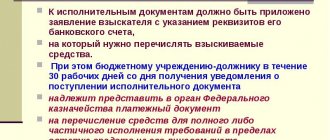Why do you need a dispute protocol?
The role of the dispute protocol is quite simple: at the contract preparation stage, to regulate the legal relationship between the supplier and the consumer in such a way that it satisfies the interests of both parties. Most often, a protocol of disagreements is in demand when companies use standard contracts, which, for obvious reasons, cannot be equally and fully suitable for all customers and partners.
- Form and sample
- Free download
- Online viewing
- Expert tested
FILES
Some may have a completely reasonable question: why can’t the necessary corrections be made immediately to the text of the contract. It must be said that in the vast majority of cases this happens between organizations. However, if one of the parties uses a public agreement (offer agreement) registered in its accounting policies, disagreements can only be resolved in this way.
Why do we need a protocol of disagreements to the contract?
The PR is filled out if the parties wish to formalize a contract, but the supplier does not agree to accept the customer’s terms without deliberation.
The PR provides a written negotiation process, the results of which, taking into account the PR, the contract is signed by the parties. In essence, the task of the PR is to regulate legal relations between the parties to the transaction at the stage of developing the contract in such a way that the terms of the document satisfy the interests of both parties to the contract. Most often, PR is drawn up when enterprises use standard contracts that are unable to satisfy the interests of all parties.
With the help of PR, the parties agree on certain terms of the contract, reaching mutual understanding when signing it on mutually beneficial terms.
This document is not considered an additional agreement or other application. The PR form is only written, representing a table where the disputed clauses of the contract are noted with the designation of a counteroffer.
Who draws up the protocol of disagreements?
Typically, the PR is drawn up by the client.
The representative of the company constituting the PR must have authority and appropriate qualifications in the legislative field. Most often, this is a company lawyer or the head of a department responsible for drawing up such an agreement. In some circumstances, in small companies, the preparation of the PR may be carried out by the secretary of the company by order of the manager, but in any case, the head of the company is required to sign the final text of the PR.
Note. If the comments noted in the PR were agreed upon verbally with the counterparty in advance, the execution of the contract will take place without red tape.
Who draws up the protocol of disagreements
As a rule, a protocol of disagreements is written by a representative of the company that is the client. It does not matter which employee will make the corrections; only one condition is important: this person must have sufficient qualifications and a certain level of knowledge in the field of legislation. Most often, this is the company’s lawyer or the head of the structural unit within whose competence this agreement falls. Sometimes the secretary can edit the text, but in any case, after drawing up the contract form, it must be submitted for signature to the manager or another person authorized to act on his behalf.
Deadline for drawing up a protocol of disagreements
By law, the period for drawing up this document is thirty days. However, in practice this period is much shorter, since companies are usually interested in concluding an agreement as early as possible.
After receiving the protocol, the author of the agreement is also obliged to notify the counterparty within a thirty-day period whether he agrees with the amendments made or rejects them.
The contract can only be signed when both parties are completely satisfied with all the provisions of the contract. From the moment it is signed, all future disputes and disagreements regarding its content can be resolved in court (unless, of course, the parties manage to reach an agreement peacefully).
When it is necessary to draw up a protocol of disagreements:
Under the protocol of disagreements in Part 1 of Art.
445 of the Civil Code of the Russian Federation is understood as a notice of acceptance on other conditions. The protocol of disagreements to the agreement agrees/clarifies/corrects individual clauses of the agreement, the wording of which one of the parties disagreed with or the content of which turned out to be ambiguous. Despite the fact that this term appears only in articles on the mandatory conclusion of a contract (an exceptional case that is not typical for contractual relations that are free by default), protocols of disagreement are widely used to conclude a wide variety of contracts.
Important! In the case of a mandatory conclusion of a contract, much in the settlement of disagreements is determined by the mentioned Art. 445 of the Civil Code of the Russian Federation. However, the regulation proposed by the legislator is optional: it does not apply if the law or agreement of the parties provides for a different rule.
With regard to other agreements that follow the rule of freedom of contract, the procedure for resolving disagreements is entirely in the hands of the parties, however, it is necessary to take into account the requirements of Art. 437–443 Civil Code of the Russian Federation.
Note! In relation to a state contract, the preparation of a protocol of disagreements is regulated in detail by Art. 83.2 of the Law “On the Contract System...” dated 04/05/2013 No. 44-FZ. We explain in detail how to draw up a protocol of disagreements under Federal Law 44 here.
There are no requirements in civil law for drawing up a protocol of disagreements. The form of this document is dictated by business practice and the peculiarities of relations between specific parties (for example, there are large companies that prefer to work according to their own forms of protocols, which are freely available on their official network resource).
The protocol of disagreements to the agreement can be found here: Form of the protocol of disagreements to the agreement.
Rules for drawing up a protocol of disagreements
Today there is no unified, mandatory sample protocol of disagreements, so enterprises and organizations have every right to write it in any form or according to a template developed within the company and approved in its accounting policies. At the same time, regardless of which option is chosen, this document must include a number of necessary information:
- date and place of its compilation,
- number and date of the contract to which it is drawn up,
- company names,
- a complete list of points for which the adjustment is made (indicating the initial interpretation and the corrected version).
It should be noted that several protocols of disagreements can be drawn up for one agreement, until the agreement fully takes into account the needs of both parties.
Protocol of disagreements to the agreement under 44-FZ, sample 2021.
Content
1. The essence of the protocol of disagreements
2. Posting a protocol of disagreements
3. Response to the protocol of disagreements
4. Act of discrepancies to the additional agreement
The protocol of disagreements is a tool for the supplier to influence the customer’s position in order to change the design documentation. Two news, bad and bad: you can draw up this protocol only once, and with its help you can only change the non-essential terms of the contract (details, personal data, amounts of money, technical characteristics of the procurement object, etc.). Does this mean that it is not needed? No, the protocol of disagreements is a very necessary document. When and to whom – read our article.
The essence of the protocol of disagreements
According to the legislation, this document is capable of adjusting any contract, including government contracts. Although the PR is not regulated by law, it would be useful to indicate in it the following information about the counterparties of the transaction:
1) the name of the enterprises of the supplier and the customer;
2) INN, OGRN, KPP;
3) legal and actual addresses;
4) bank details of the parties;
6) date and place of registration of the PR;
7) information about a fragment of procurement documentation that requires changes with its own version;
 notification, whose version of the text was accepted in the final version, signatures of counterparties with a transcript.
notification, whose version of the text was accepted in the final version, signatures of counterparties with a transcript.
Want to win a quote request?
Take advantage of our achievements! We will help you win at least a third of the quotes!
Win Quote
Posting a protocol of disagreements
1) Log in to your personal account.
2) Go to “Contracts” and look for the contract that interests us. Select the contract card number.
3) Click “Create”.
4) We state the essence of the disagreements and attach a previously drawn up document.
5) Click “Continue”. We send the PR to the EIS.
6) We monitor updates to the contract card and wait for the customer’s response.
Reply to the protocol of disagreements
According to Part 4 of Article 83.2 of 44-FZ, a participant can express disagreement with project documents only once. The auction organizer analyzes the authenticity of the changes proposed by the supplier in the documentation to the norms of the law on the contract system, as well as the feasibility of adjusting the project.
Next, the customer has two options:
1) He agrees with the participant’s correction and publishes the project documentation in a modernized version. Then, when the contract is concluded, its terms will be changed using an additional agreement.
2) The customer does not agree with the proposed edits and again publishes the project without changes with a comment on the topic whose position on this issue is more correct.
There are also two ways for the participant:
1) Sign the contract in the form in which the customer provided it.
2) File a complaint with the FAS and appeal in court against the customer’s decision to recognize his actions as attempts to evade signing a contract and add him to the register of unscrupulous suppliers for 2 years.
Do you want to be guaranteed to win tenders? Send a request and get a whole staff of experts at your disposal with payment for results!
Win the tender
Act of discrepancies to the additional agreement
Although 44-FZ does not allow changes to the state contract, in practice it is slightly changed by mutual agreement of the parties, since in our unpredictable times many circumstances can change radically in a very short time, for example, tariffs for industrial and industrial components, the amount of VAT and etc.
To change the contract, they resort to the procedure of concluding an additional agreement, which is considered part of the contract and can never be changed. But if suddenly something went wrong during the signing of the agreement, then a statement of discrepancies to the additional agreement is drawn up.
Protocol of disagreements download sample
Back to list
Rules for drawing up the protocol
The protocol of disagreements can be written on a standard A4 sheet or on the organization’s letterhead - the second method is convenient because you do not need to enter the company details again. It can be written by hand or printed on a computer - this also does not matter.
The protocol must contain “live” signatures of the heads of both companies or their representatives.
It is not necessary to certify a document with a seal, since since 2016 legal entities have the legal opportunity not to resort to seals and stamps to endorse documents. However, if there is such a desire, the law does not prohibit it.
From the moment the protocol is signed, it becomes part of the main agreement, the text of which must contain a note that the agreement is valid taking into account this document.
The protocol of disagreements is drawn up in two copies , each of which must be properly certified - further
- one of them is transferred to the supplier of the product or service,
- the second remains with the consumer.
After the protocol has been agreed upon, amendments are made to the agreement, and the document itself is transferred for storage to the enterprise archive.
Sample of drawing up a protocol of disagreements
- At the beginning of the document, its name is indicated, as well as the number corresponding to the document flow.
- Then a link is given in the form of the number and date of the agreement to which the protocol is drawn up.
- Next, enter the full names of the companies between which it is concluded.
- Below is the main part, designed in the form of a table, into which all the necessary edits are entered in order.
- The first column contains the number of the paragraph or subparagraph (sometimes even indicating the paragraph) to which this correction relates.
- The second column includes an excerpt from the original text, the third - its edition (i.e., an adjusted version).
- After all the necessary adjustments have been made, the document is signed by representatives of both parties, indicating their positions and transcripts of signatures.








